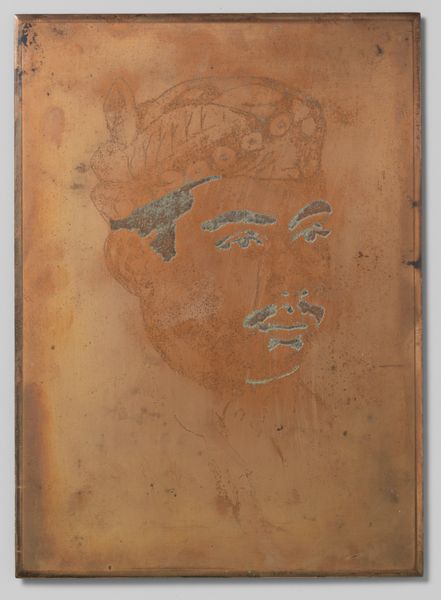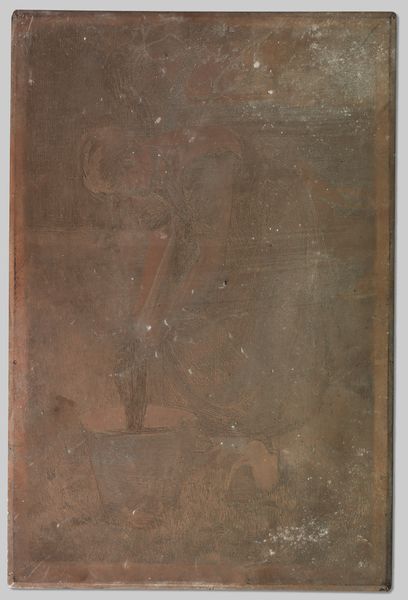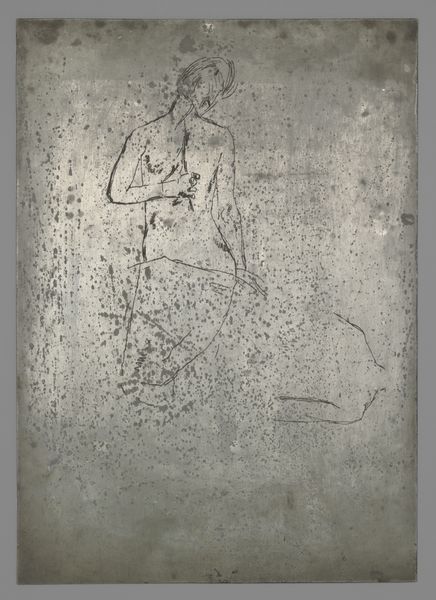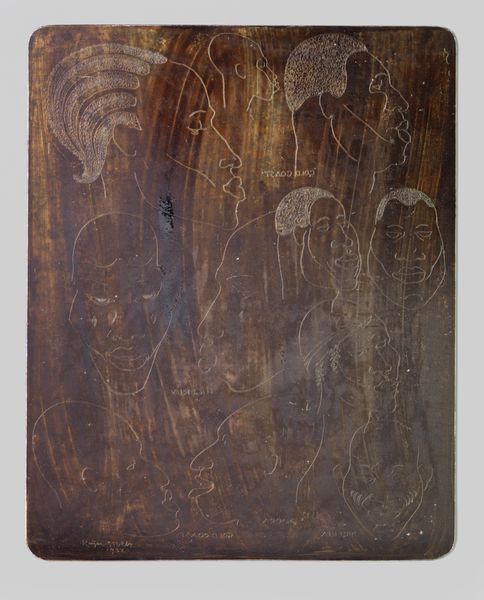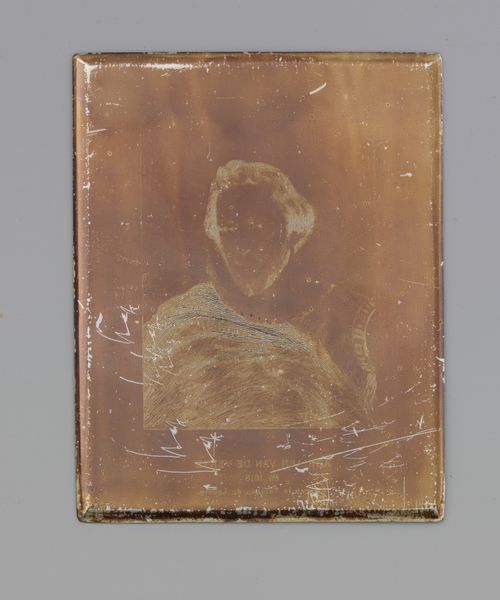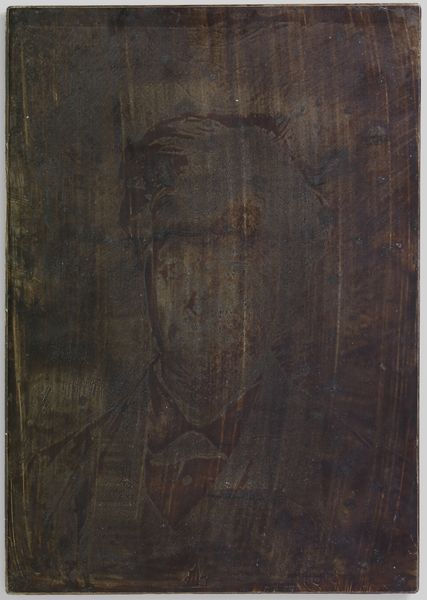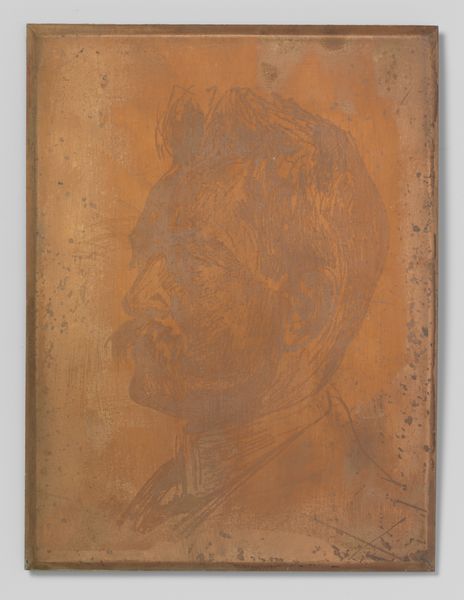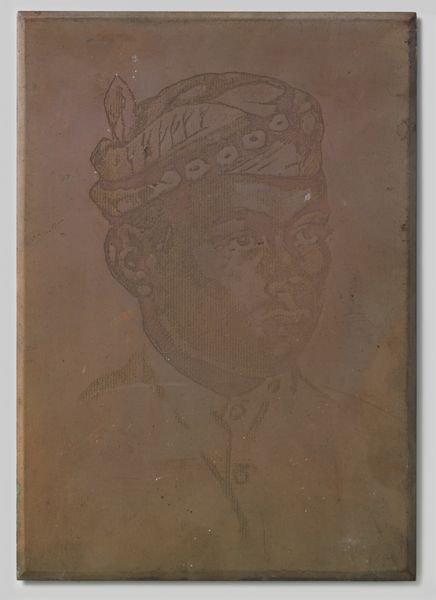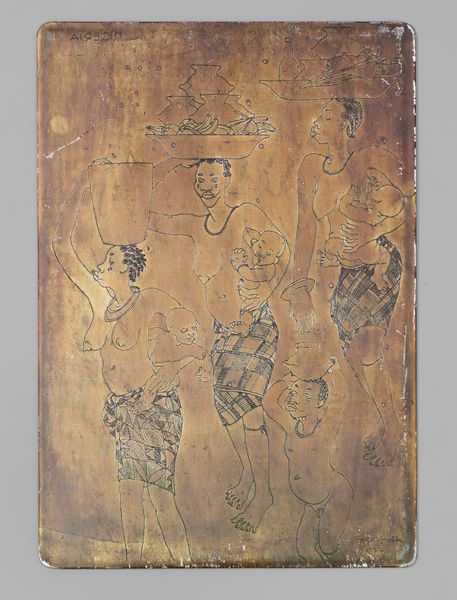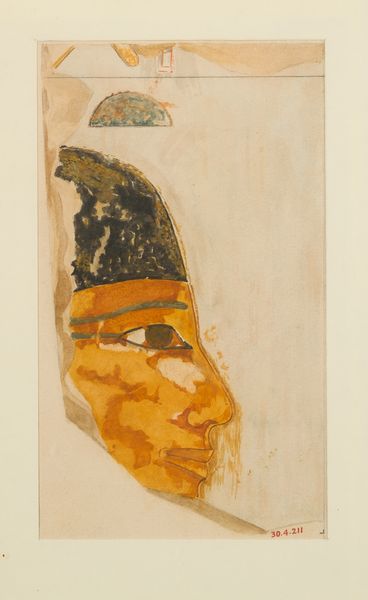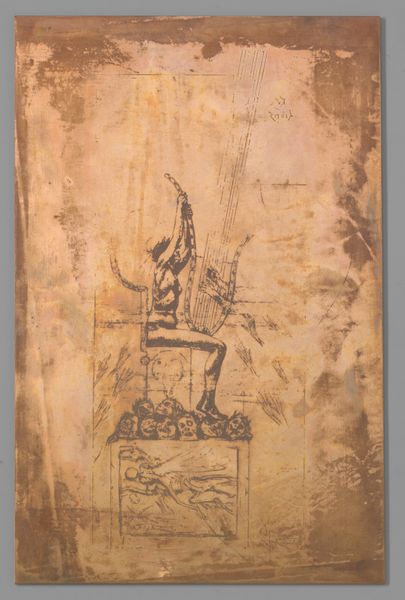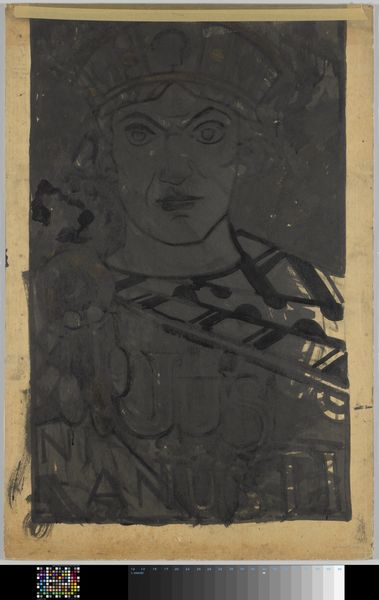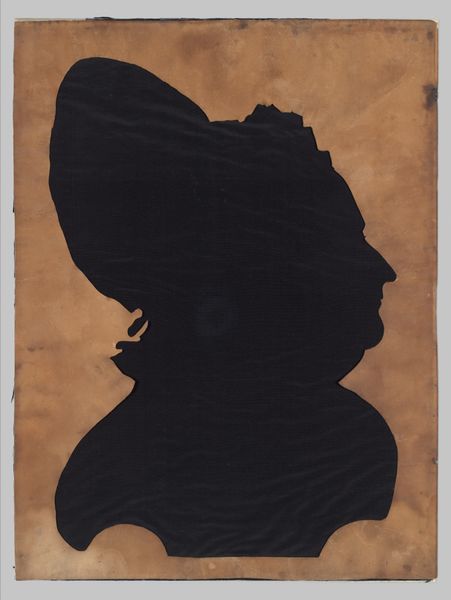
print, etching
#
portrait
# print
#
etching
#
asian-art
#
realism
Dimensions: height 201 mm, width 142 mm
Copyright: Rijks Museum: Open Domain
Curator: Willem Witsen created this intriguing print around 1921, titled "Portret van een Soendanese man," now held at the Rijksmuseum. It's an etching, which is itself a significant historical medium. Editor: The color is striking. That warm, almost tarnished copper against the lighter etched lines gives it a melancholy feel, like a faded memory. It’s beautiful in its rawness. Curator: It's important to consider this portrait within the context of Dutch colonialism at that time. The very act of creating and displaying this image speaks volumes about the power dynamics at play, where Europeans were actively documenting and representing colonized populations. Editor: Absolutely. And looking closely, the way Witsen uses etching—the incised lines, the tonal variations achieved through differing acid baths—shows not just technical skill, but also reveals an awareness of the physical act of labor. It begs the question, what labor went into both its making, and it subject’s own, life? Curator: I wonder about Witsen’s intentions. Was he trying to depict the man with respect, or was this simply a form of exoticization for a Western audience? The Rijksmuseum's role is pivotal here—how does it present this complex history to a contemporary audience? Editor: I see more of a studied interest, like the copperplate almost holds the ghost of the subject, a witness through process and material. Consider what it means to fix a portrait of a man from one culture, rendered with metal from another. This speaks to colonial trade as much as it does individual identity. Curator: Precisely. The politics of representation cannot be divorced from the colonial context. This image reflects more than just the individual portrayed. It reveals an unequal exchange that defined that era. Editor: It definitely invites contemplation on those issues. I see both the allure and the tension—between maker, material, subject, and our gaze here in the present.
Comments
No comments
Be the first to comment and join the conversation on the ultimate creative platform.

